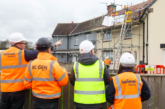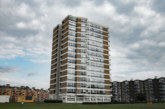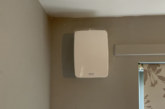With the recent Clean Air Strategy placing more focus on indoor air quality (IAQ), coupled with the latest updates to the Building Bulletin 101 (BB101), Ana Cross from Elta Fans puts forward the case for mechanical ventilation with improved filtration in educational buildings to help balance the new requirements with energy efficiency.
It’s no surprise that providing good indoor air quality (IAQ) and thermal comfort can have a hugely beneficial impact on health for a building’s occupants, but it has also been shown to vastly improve concentration, productivity and the academic performance of staff and students in educational buildings.
While the latest Clean Air Strategy focuses predominantly on air quality in the home, it is a positive move towards a world that acknowledges IAQ as a major issue. While this has widely been accepted as a way to establish a favourable learning environment, the challenge now is to ensure buildings are optimised for both air quality and efficiency.
As the title of the guidelines suggest, BB101 Guidelines on ventilation, thermal comfort and indoor air quality in schools, covers the specific requirements for ventilation, thermal comfort and indoor air quality (IAQ), and how these services impact school buildings and their occupants. Since its last revision, BB101 now details a number of issues regarding ventilation rates based on occupancy levels, adaptive thermal comfort to prevent cold draughts and summertime overheating, and guidance on how to reduce the level of outdoor pollutants in the air supply.
In recognition of the fact that the UK suffers from high levels of air pollutants from traffic, such as particulates (PM10 & PM2.5) and gaseous pollutants (nitrogen dioxide), the Education & Skills Funding Agency emphasises the need for higher levels of air filtration for schools in highly polluted areas.
BB101 now discusses air filtration in considerable detail, enabling designers to confidently combine an energy efficient ventilation strategy with higher levels of air filtration to minimise the ingress of polluted outdoor air into buildings. It furthers its guidance by recommending the use of finer filters on supply intake air streams, such as ISO ePM2.5 70% (F7) or even ISO ePM1 90% (F9). Filtration provides a means of cleaning the air supply, but also ensures that the mechanical ventilation system continues to operate at its optimum level by protecting the fans and energy recovery devices.

Balancing compliance with efficiency
In circumstances where natural ventilation is not appropriate, either because the outdoor air is too polluted, hot, or cold, mechanical ventilation strategies based on energy recovery with thermal treatment and improved filtration, can be a more suitable and reliable option due to the energy efficiency savings and comfort it provides.
Energy Recovery Units in particular help to maintain a comfortable working temperature in school buildings by recovering thermal energy from any warm air inside the occupied space to raise the temperatures of the incoming fresh air. However, during colder periods of the year, the heat recovered is not always sufficient, which is where Energy Recovery Units with heating capability come in. Essentially, the same unit can be used to deliver more heating into the occupied space, offering a more energy-efficient way of heating or cooling a space for extra comfort.
In the summertime, these units can also recover cool air from the occupied space to help lower the temperature of the incoming air supply. When fitted with integrated controls, these Energy Recovery Units can significantly help to reduce the unnecessary use of air conditioning by using passive measures such as night cooling or night purge to cool spaces.
What’s most important in the process of energy recovery is the use of filters to remove pollutants and consistently provide clean and fresh air, which can aid concentration and productivity. Opting for mechanical ventilation with high grade filters will offer enhanced filtration and therefore vastly improved air quality, particularly for schools located in urban areas with higher pollution levels.
The BB101 highlights the importance of ventilation controls in allowing end users to adapt ventilation in line with their fluctuating requirements. Ventilation systems should be able to accommodate times of low occupancy and increase ventilation for out-of-hours use, or during the summer period. Controls also help to maintain acceptable indoor air quality for educational facilities by monitoring CO2 levels while avoiding cold draughts and excessive energy consumption in the heating season.
School ventilation systems
While there are significant benefits for improving air quality, complying with these new guidelines can be a costly exercise for schools. To outweigh this cost, schools should opt for energy recovery systems which boast energy efficient features for a shorter payback period. For example, those with more efficient fans will consume less energy.
Ultimately, the ventilation guidelines have been updated to encourage better designed schools which offer comfortable learning and teaching environments for students and staff. Although the updates are comprehensive, schools can comfortably comply with these guidelines by considering energy recovery ventilation with enhanced IAQ management devices as an efficient and reliable alternative to drawing energy from the mains.









